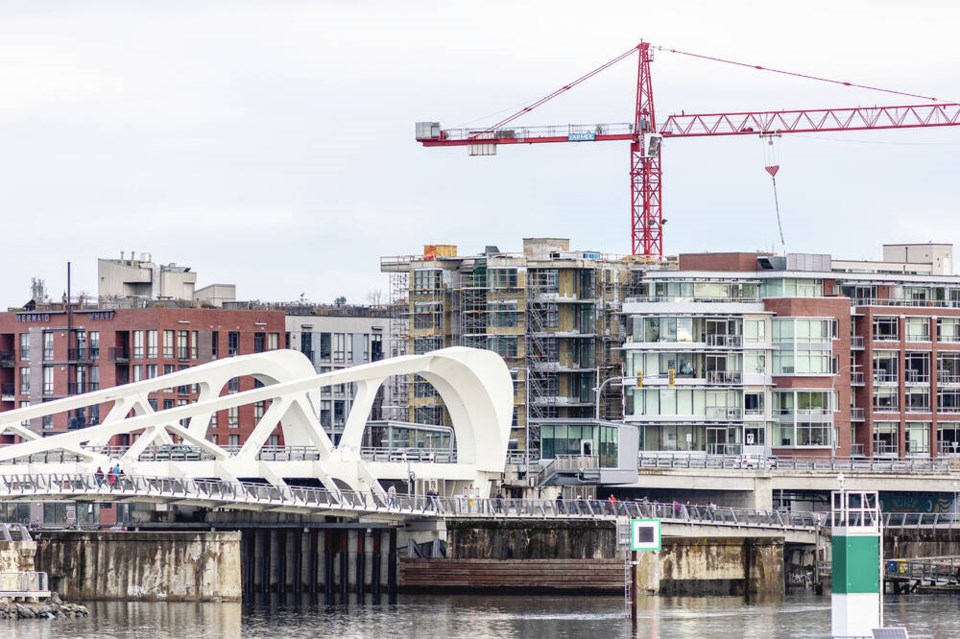A commentary by an independent researcher interested in housing supply and demand, and the smart growth of sustainable future-ready cities. He lives in Victoria.
I am curious what Victoria’s missing middle housing initiative will do, and just as interested in what it will not do.
We’ve already been told it won’t improve affordability. (“Many people are upset because they are under the impression missing middle translates into affordable,” Times Colonist, Jan. 15.)
People were confused on that bit, apparently. When the text and subtext of elections is the housing crisis, it may be easy to see how it gets confused in the atmospheric river of election marketing materials.
Underpinning all that is the absolute need and desperation for affordable shelter in our society.
We’ve also been told that “oversupply” is how we make housing affordable: by building so much supply it outpaces demand.
Well, where is the math on that? How come we never see how much supply versus how much demand and when “affordable” is actually going to happen? How come it is always we need more supply via density, missing middle, sprawl and what-have-you, but never a timeline for when the problem is fixed?
We can start to figure this out if only we look to the clues:
The Canada Mortgage and Housing Corporation just released its rental report, and Greater Victoria’s apartment buildings saw rental increases of 30 per cent between tenants and average rent increases of 6.7 per cent, despite record-high supply growth. That’s a clue.
Early last year, the Bank of Canada found that one-fifth of all mortgages since 2014 were by investors, not counting cash or corporate purchases. Another clue.
Last April, Statistics Canada said one-third of residential properties in B.C. were owned by multiple-property owners, not counting out-of-province residents or corporations: “For the purposes of this release, people who own one property in a given jurisdiction and a second property in another jurisdiction are not included among multiple-property owners at this time.”
If you have a community of 1,000 people, and 100 need affordable housing, and 50 new people join the community every year, how many homes do you need to approve, start, and finish building?
What if you approve 200 homes but can only finish 100 in a year? You are still short. Supply chases demand.
And if demand includes investors wanting a return on their investment dollars, that’s even less supply going to people who need it.
B.C. built nearly 42,000 homes in 2021 and gained 100,000 new people while 13 per cent of its population already needed affordable housing.
The 570,000 additional homes needed in B.C. by 2030, which the CMHC identified in June, was admitted in October to be impossible because of skilled trades shortages. That’s a clue.
We do not have enough workers to complete homes fast enough, independent of how many new homes are approved. Buildings need builders, after all.
As the B.C. Real Estate Association found in their 2022 analysis: “Both the number of starts and the speed of completion affect prices in the resale market. If starts rise but construction durations also rise due to a lack of skilled labour, the benefits of those starts will be attenuated.”
RBC estimates the number of new households will keep housing demand high enough to avoid a market crash. Yet more clues.
I’m not against more diverse housing options. I would love to see rooftop greenhouses and communal spaces and walkability, too. But if you sell “just build more” you must show your math.
Assuming the federal government doesn’t slow immigration or improve its labour mobility issues for skilled trades, investors and population growth are the largest demand factors for new supply to contend with.
The missing middle initiative will not be a win for affordability, and salvaging it as a “start” misses the point entirely. Our issues are larger and more complex than that.
But without at least calculating supply versus demand, we are piling dirt into the ocean hoping to make new land without ever knowing how deep the ocean goes.
>>> To comment on this article, write a letter to the editor: [email protected]



